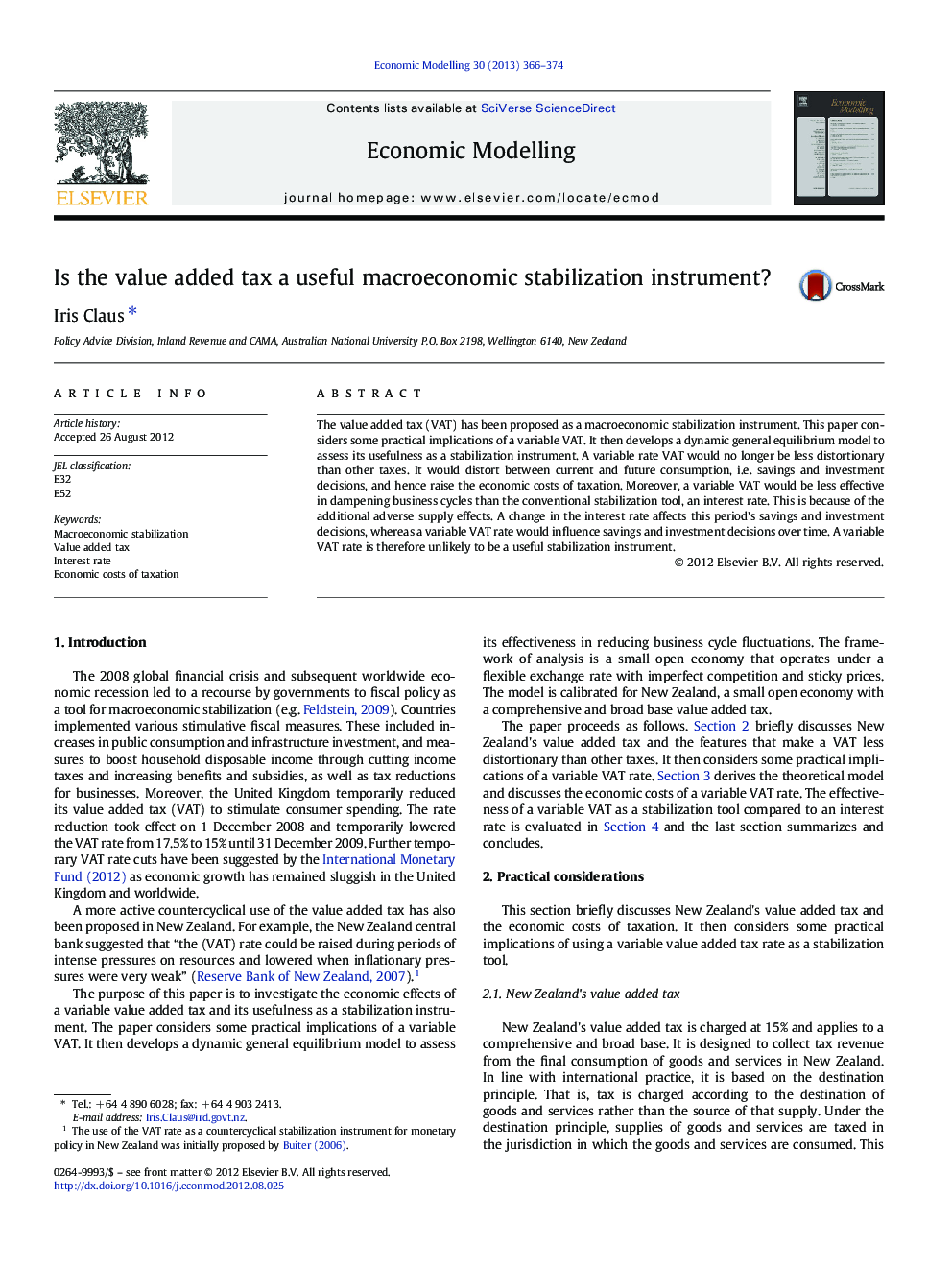| کد مقاله | کد نشریه | سال انتشار | مقاله انگلیسی | نسخه تمام متن |
|---|---|---|---|---|
| 5054723 | 1476538 | 2013 | 9 صفحه PDF | دانلود رایگان |
The value added tax (VAT) has been proposed as a macroeconomic stabilization instrument. This paper considers some practical implications of a variable VAT. It then develops a dynamic general equilibrium model to assess its usefulness as a stabilization instrument. A variable rate VAT would no longer be less distortionary than other taxes. It would distort between current and future consumption, i.e. savings and investment decisions, and hence raise the economic costs of taxation. Moreover, a variable VAT would be less effective in dampening business cycles than the conventional stabilization tool, an interest rate. This is because of the additional adverse supply effects. A change in the interest rate affects this period's savings and investment decisions, whereas a variable VAT rate would influence savings and investment decisions over time. A variable VAT rate is therefore unlikely to be a useful stabilization instrument.
⺠The value added tax (VAT) has been proposed as a macroeconomic stabilization tool. ⺠This paper considers practical implications of a variable VAT rate. ⺠A variable VAT as a stabilization tool is examined in a general equilibrium model. ⺠A variable VAT rate is unlikely to be an effective stabilization instrument.
Journal: Economic Modelling - Volume 30, January 2013, Pages 366-374
